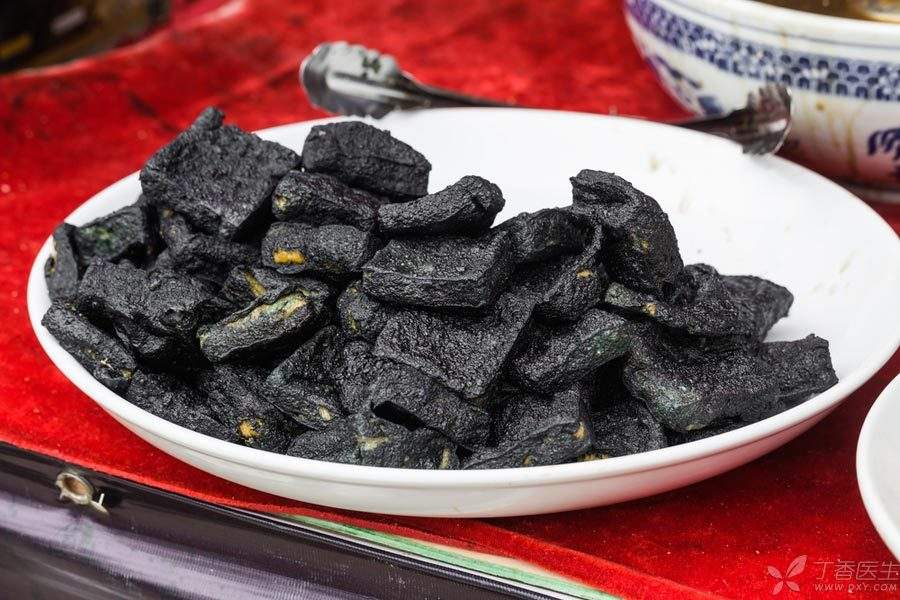
Stinky tofu is undoubtedly an exotic flower in traditional Chinese food. The stinky smell is enough to make people who don’t like it stay away. For those who like stinky tofu, this is the best taste in the world.
The peculiar flavor, coupled with the frequent scandals in recent years, has led many people to ask again: Is this stinky tofu a kind of food in how? Is it safe to eat?
Stinky tofu is a kind of fermented food
In different regions, stinky tofu is made, processed and eaten in different ways, which can be roughly divided into two categories:
Stinky tofu milk
That is, the kind of canned stinky tofu milk that can be bought in supermarkets.
It is made by naturally fermenting tofu to grow mold, and then pickling with salt and spices.
This kind of stinky tofu is cyan and is said to be famous all over the world because it was loved by Empress Dowager Cixi and was given the name “Yuqingfang”. It is also eaten in the same way as ordinary tofu, such as being used to coat steamed bread and pancakes, or as a snack with porridge.
Stinky tofu
In the south, stinky tofu is often not eaten directly, but is used as food for further cooking, such as frying, charcoal baking, steaming, etc. This kind of stinky tofu is easier to make than stinky tofu milk, just soak the tofu in [stinky brine].
Fried stinky tofu, which is often seen in snack streets, is made of this type of stinky tofu.
No matter which one, its core is tofu fermentation. Bean curd is fermented naturally, with mold as the main component. Dried tofu is fermented with smelly brine, and the strains are more complicated.

Why [smells smelly, tastes delicious]?
[Smells smelly and tastes delicious] is a unique feature of stinky tofu. This is not an exaggeration by lovers, but has sufficient scientific basis.
[Smelling] and [Tasting] are two different sensory experiences.
[Smell] is a process in which small volatile molecules enter the nasal cavity and are sensed by olfactory cells. [Taste] is a comprehensive experience in which food is sensed by taste bud cells when chewing in the mouth, while volatile molecules enter the nasal cavity from the oral cavity and are sensed by olfactory cells.
When we experience food, the molecules [smelled] and [tasted] are often different.
During the fermentation of stinky tofu, Complex microorganisms break down some of the protein in tofu, Substances such as ammonia and sulfur-containing compounds are the main sources of [smelly]-yes, these substances are also abundant in excreta. In addition, a large number of other volatile molecules such as ethers, alcohols and esters are generated during fermentation, which constitute the unique smell of stinky tofu.
At the same time, proteases produced by microorganisms also hydrolyze proteins into polypeptides and amino acids, and these fermented products have strong fragrance. The most typical is glutamic acid-free glutamate is the effective component of monosodium glutamate and chicken essence. All kinds of fermented bean products have rich delicate flavor, and this is the mystery.
After cooking, especially frying and barbecuing, on the one hand, those [odor molecules] are fully volatilized and the odor is not strong; On the other hand, the delicate flavor of amino acids such as glutamic acid is highlighted, and the amino acids undergo [Maillard reaction] at high temperature, which will further generate various fragrance molecules, thus [tastes delicious].

[smelly brine] does have potential safety hazards,
In the production of dried stinky tofu, the key is [stinky brine] used for soaking.
Different producers make smelly brine in different ways. Some use straw and meat to leave them in the open air for several months, allowing them to rot and ferment to obtain fermentation broth containing various microorganisms. Some do not use meat, but use plants such as Erythrina leaves, wild amaranth, bamboo shoots, cabbage heart, wax gourd, ginger, prickly ash, etc. for fermentation, which also takes eight months or even longer to obtain qualified smelly brine.
These traditional methods of making smelly brine cannot control the types of microorganisms in it. Although the [friendly microorganisms] needed for fermentation can be obtained, they cannot eliminate pathogenic microorganisms harmful to health. In addition, many small workshops use inferior raw materials and sewage to make smelly brine, so hygiene cannot be guaranteed.
In contrast, modern production can monitor the quality of smelly brine to a certain extent, such as monitoring the number of pathogenic bacteria. The stinky tofu produced in this way is much safer.
[Excrement] [Chemical] Stinky Tofu Is It Real?
There are some reports on the Internet that [excrement] or [chemicals] are used to make stinky tofu.
From a technical point of view, stinky tofu [smells smelly and tastes delicious] cannot be made with excrement or chemicals alone.
However, it cannot be ruled out that the stinky tofu made by some illegal vendors has some flavor deficiencies. For example, the stinky brine is not smelly enough or the color is not dark enough, so they add excrement or chemical reagents to try to [optimize]. Or some illegal vendors just heard that someone did this and did it.
Can stinky tofu still be eaten?
As a kind of fermented bean products, stinky tofu produced in a standardized way is safe to eat. During fermentation, bacterial metabolism will also produce some vitamins, such as vitamin B12, which vegetarians easily lack, and its nutritional value is even increased compared with tofu.
It should be noted that stinky tofu, like other traditional foods, does not have a unified flavor standard or production process-this diversity makes it difficult for people to objectively judge whether the flavor of a specific stinky tofu is good and whether its safety and hygiene are qualified.
For diners who like to eat stinky tofu, the safety and hygiene of large enterprise products with clear sources and under government supervision will undoubtedly be much more reliable than roadside stalls with unknown sources.
